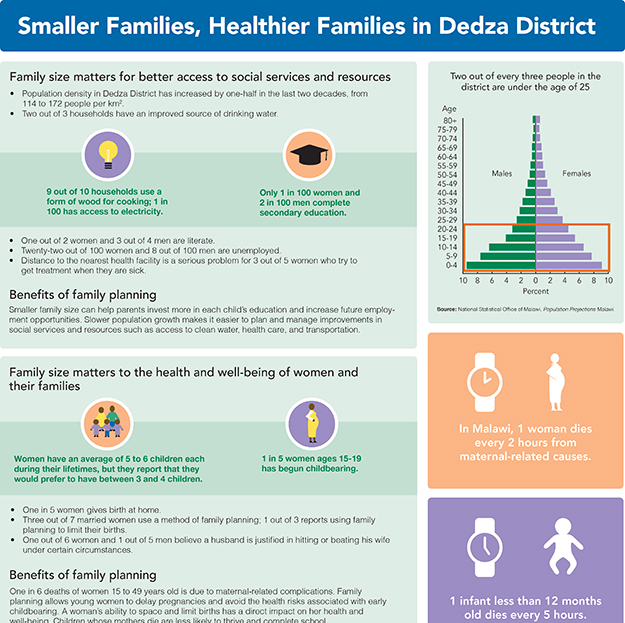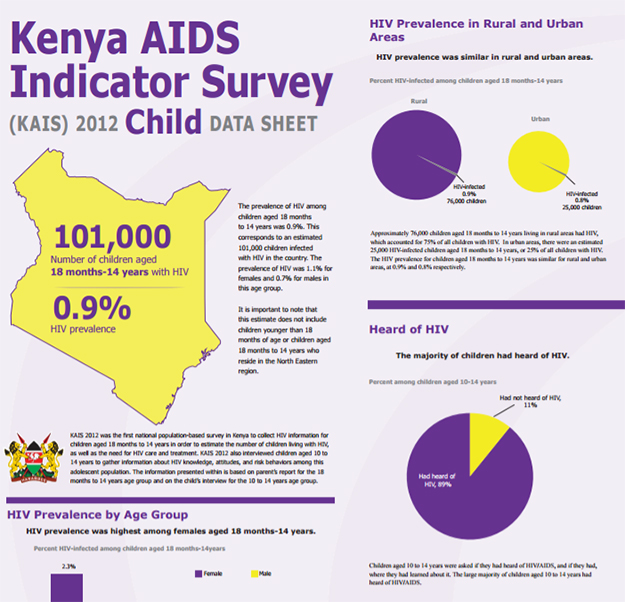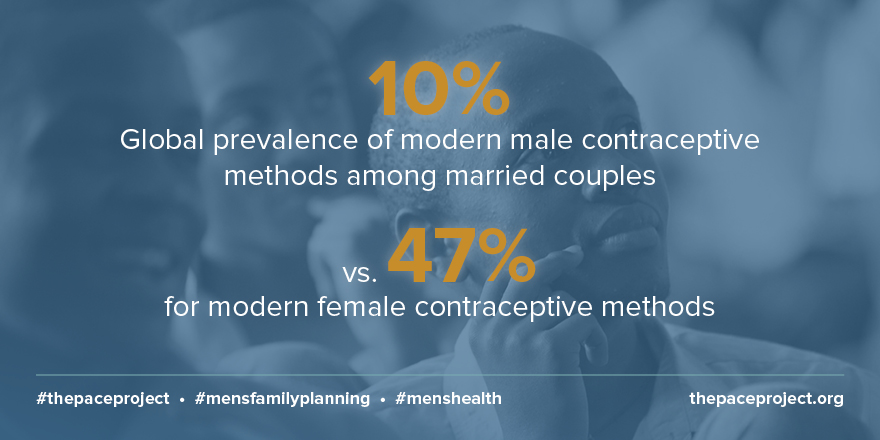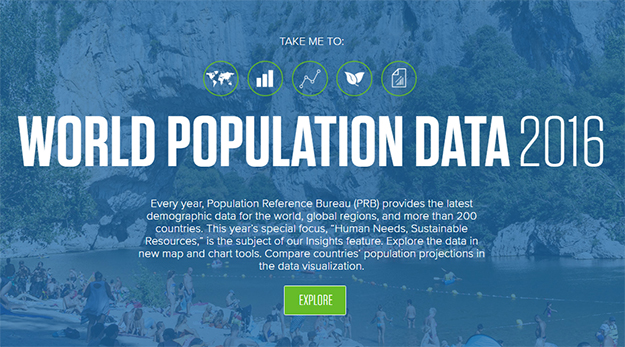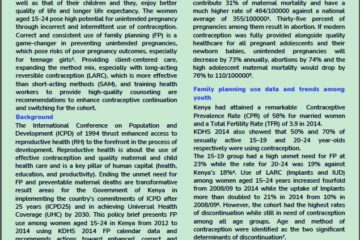
PRB PACE and Zambia: Opportunities for Engagement
In 2012, the Government of Zambia made ambitious commitments to meet the family planning (FP) needs of the country by doubling funding for FP programs, expanding dialogue and partnerships with NGOs and religious leaders to increase demand, improving the contraceptive method mix, and increasing access to services for underserved populations. The government has also committed to responding to the HIV/AIDS epidemic, with a goal of reducing new infections, as part of a broader plan for transitioning to a middle-income country. As stakeholders and partners mobilize to ensure that policy and financial commitments are honored, continued efforts are needed to ensure that decisionmakers at all levels understand the importance of family planning and FP/HIV integration for multisectoral development.
Population Reference Bureau (PRB) has a long history of empowering local and regional stakeholders, primarily in Africa, to be effective policy communicators and advocates who can hold their leaders accountable. PRB positions governments and civil society to communicate data in meaningful ways by drawing attention to emerging issues and monitoring implementation of existing policies.
PRB’s Policy, Advocacy, and Communication Enhanced for Population and Reproductive Health (PACE) Project develops the capacity of policymakers and advocates to communicate the relevance of FP and HIV investments across development sectors. PACE uses compelling materials to ensure that stakeholders in the health sector and beyond understand complex data and are equipped with the skills to be accurate, credible, and effective spokespeople.
This guide describes existing resources from PRB and partners that use multimedia approaches, data visualization, and policy communication to build support for FP and HIV through empowering multisectoral communities, building champions, and communicating evidence. These PRB resources are examples of products we could develop and approaches we could take with Zambian partners to build stronger political and financial commitment for FP and HIV.
Empowering Multisectoral Communities
Connecting Paths: Integrating Reproductive Health and HIV Services in Kenya
PRB’s multimedia ENAGAGE presentations provide advocates with a compelling, evidence-based tool to generate policy dialogue. Country-focused ENGAGE presentations take a deep look at a specific policy issue. This presentation, about reproductive health (RH) and HIV services in Kenya, was developed collaboratively by the Kenyan National Council for Population and Development, the Kenya National AIDS and STI Control Programme, the Reproductive and Maternal Health Unit, and PRB. The video below begins at the explanation of how integration of services can work and why it is a valuable investment for the country to make (approximately two minutes). The presentation was launched in Nairobi in 2015 at an event attended by government officials, policymakers, civil society leaders, and donors.
Improving Nutrition and Food Security Through Family Planning
PRB’s global ENGAGE multimedia products have been viewed by thousands of policymakers in global, national, and local gatherings, including six heads of state. This segment from an ENGAGE presentation raises awareness about how FP can help improve key measures of nutrition for mothers, infants, and children, as well as improve food security more broadly. The presentation explains how current and projected population growth will constrain the availability of agricultural land, especially as plots are further divided among successive generations.
Climate Change, Health, and Population Dynamics: A View From Tanzania
Engaging researchers and advocates outside of the health sector is important to build support for multisectoral approaches such as population, health, and environment (PHE). This blog post, written by a PRB staff member and hosted by a preeminent environmental organization, focuses on the challenges of accessing health care in remote western Tanzania. The blog post conveys the benefits of addressing population dynamics and natural resource management to build resilience to climate change. Tanzania-based PHE policymakers, practitioners, and advocates found the blog relevant to their work and shared it widely within Tanzania.
Family Planning and the Path to Resilience
In many developing countries, extreme weather events tied to climate change are increasingly threatening people’s property, livelihoods, and lives. Policymakers seek strategies to help people build resilience to these environmental shocks, which can exacerbate crises caused by poverty and poor health. This interactive infographic, shared via the web and social media, explains the concept of resilience in simple terms, highlighting the policy interventions that help families be more resilient to a crisis. Framing resilience as the integration of health and nutrition, education, and economic stability, the infographic outlines clear policy changes that decisionmakers across sectors can implement.
Harnessing the Demographic Dividend
Several ENGAGE products focus on economic development, especially the potential benefits of a demographic dividend. This segment from the ENGAGE presentation “Harnessing the Demographic Dividend” explains the changes necessary for countries to achieve a demographic dividend, and serves as a platform for leaders to discuss investments in youth, FP, education, and the economy. Partners and others have used this presentation on multiple occasions to open dialogue on population and development issues in sub-Saharan Africa, including at a United Nations meeting of heads of state from the Sahel region and a high-level ministerial meeting in Ethiopia.
Building Champions
Communicating Evidence to Policy Audiences
Many researchers and advocates aim to improve population and health policies but lack the necessary skills to translate data and results into policy-relevant recommendations. To overcome this gap, PRB conducts policy communication trainings to strengthen the capacity of experts, researchers, and advocates to influence policies for lasting change. Alumni of these trainings have emerged as leaders in research and policy communication. They have presented research on RH, FP, and HIV before international audiences such as the International Conferences on Family Planning and the African Union Summits and local audiences such as traditional leaders and Ministries.
PRB recently revised and expanded the curriculum used in these trainings, and has made the materials publicly available through an online Policy Communication Toolkit.
Informing Policy and Development Through Journalists
The media can play a vital role in setting a country’s policy agenda. Compelling and accurate news reports have the potential to spur policymakers to advance national development by addressing RH, FP, gender disparities, and population issues. Media attention is also critical to holding leaders accountable for their commitments and ensuring that they spend public resources wisely and fairly to improve citizens’ lives. Through our unique approach, including workshops, study tours, and mentoring, PRB helps journalists in understand how FP, RH, and population growth can impact development. Study tours and field visits enable journalists to see first-hand how health problems manifest and to talk to the people who are affected. Through ongoing mentorship after participating in training, PRB motivates journalists to maintain the focus on health reporting, such as in this newspaper supplement on population growth in Uganda written and produced by a trainee.
Communicating Evidence
Demographic and Youth Data Inform Sub-National Media and Leaders
Data can be powerful when they are communicated in the right format to the right audience. In Malawi, PRB partnered with government ministries and NGOs to develop a series of 28 district data sheets in English and Chichewa drawing on recent census and Demographic and Health Survey data. These one-page sheets were tailored for local leaders, highlighting key population and well-being indicators for each district. PRB and partners disseminated the district data sheets widely through a series of events with local leaders that also used a country ENGAGE presentation on the importance of addressing the needs of youth to promote national development to open dialogue. Following these events, both journalists and local leaders acted on the information contained in the materials. Journalists at community radio stations throughout the country reported local news stories highlighting the data, while many of Malawi’s local authorities revised their by-laws to deter early marriage and teen pregnancy.
KAIS Data Sheet: Making Critical HIV/AIDS Data Accessible to Users
PRB data sheets make critical data easy to access, visualize, and understand. These poster-size publications and online resources bring new perspectives and understanding to a wide set of current demographic and population-level indicators, particularly in contexts where electronic access to data is limited. To bolster the response to Kenya’s HIV/AIDS epidemic, PRB partnered with Kenya’s National Council for Population and Development, the National AIDS & STI Control Programme, and the U.S. Centers for Disease Control and Prevention to develop two data sheets (on children and adults) highlighting key indicators from the 2012 Kenya AIDS Indicator Survey (KAIS). Translating the complex survey findings into an accessible format helped facilitate use of the data for program planning throughout the country.
Family Planning and Reproductive Health in Kenya: Where are the Men?
PRB is a leader in global gender communities, serving as a source of information on why gender integration is important and how to promote gender equality. In 2015, PRB partnered with the Kenyan National Council for Population and Development (NCPD) to create this policy brief on how to involve men in family planning. NCPD and PRB developed the content of the brief together to disseminate findings from a recent survey to policy audiences; PRB provided technical input on policy and gender and NCPD ensured that the messaging and content would resonate in Kenya. The policy brief highlights key findings and offers recommendations on how to make FP and RH services more gender equitable. Over 7,000 copies of the brief were shared throughout Kenya to members of parliament, county government officials, major media houses, development partners, universities, international and local NGOs, and the general public.
Men as Contraceptive Users and Family Planning Clients
Engaging men in sexual and reproductive health, particularly FP, can improve health outcomes for men, women, and children. Expanding FP outreach and services to include men can foster shared responsibility for contraceptive use among couples, open the door to more gender-equitable relationships, and increase the use of male contraceptive methods. This infographic, widely shared through a targeted social media campaign, presents a global snapshot of modern male-controlled and cooperative contraceptive method use and highlights data that identify opportunities to engage more adolescent boys and men as contraceptive users and FP clients.
Exploring the Sustainable Development Goals
The Sustainable Development Goals (SDGs) frame the global community’s development agenda through 2030, and many of their targets are closely linked to FP and population dynamics. PRB staff are analyzing the goals and the prospects for their achievement through web articles, blog posts and this interactive infographic that clarifies the definition, measurement, and data sources of the SDGs indicator on met demand for FP.
World Population Data Sheet
The World Population Data Sheet is a signature PRB and PACE resource. This flagship print and digital content package, with a new theme every year, is widely used by policymakers, program managers, and researchers alike because of its high quality and ease of reference. The 2016 World Population Data Sheet incorporated an interactive microsite featuring a data map, data query tool, and visualizations focusing on the theme of human needs and sustainable resources. The microsite has attracted 279,410 visitors since its launch in August 2016, and the Data Sheet content generated substantial worldwide media coverage by leading global and national outlets such as Spain’s El Pais, Newsweek International, Dawn Pakistan, and Kenya’s The Standard. A detailed post by PRB about the Data Sheet content on the Wilson Center’s popular New Security Beat blog was one of the blog’s top-viewed items for 2016.


